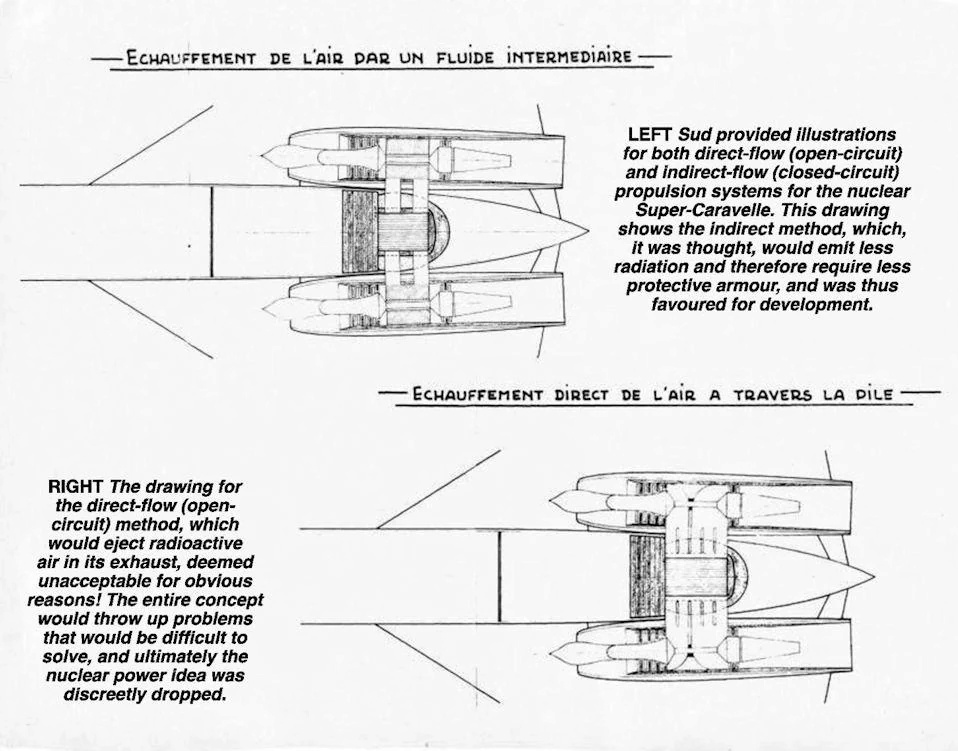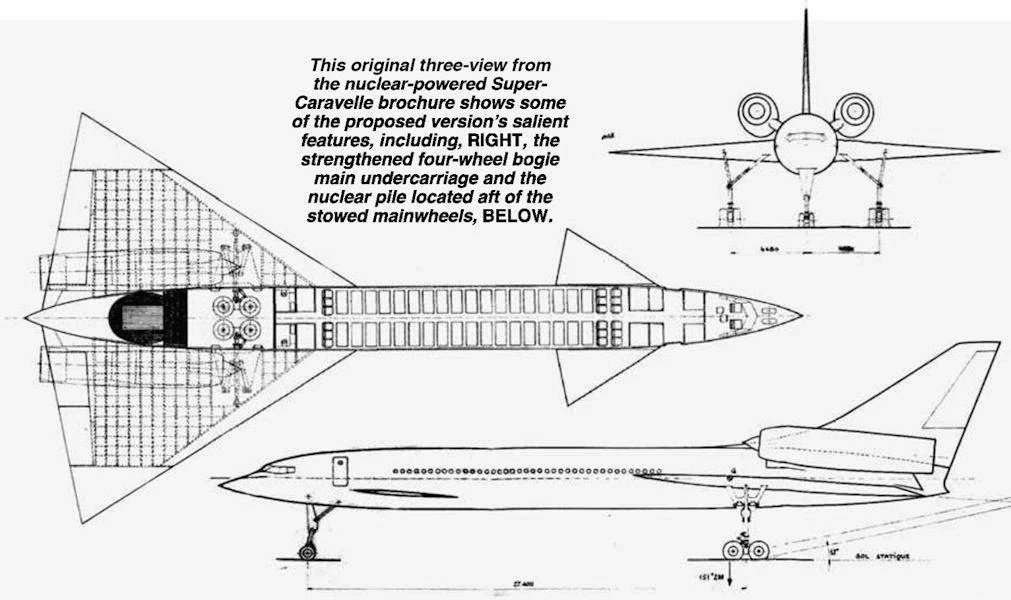Post by ukron on Oct 23, 2023 17:29:59 GMT
French nuclear power developed immediately after the end of the Second World War, leading Paris to become a veritable democratic "nucleocracy", in particular with the development of its strike force on the one hand, and the construction of a highly ambitious civil nuclear program on the other; in the final analysis, the 5th Republic is probably the political regime most influenced by the atomic question.
A little earlier, a few years before May 1958, aeronautical research and development was also one of France's main international influences in the post-war period, as can be seen from the export success of the SE 210 "Caravelle", so it was only logical that the question of the atom and civil aviation should cross paths at some point.
The idea of propelling an aircraft using atomic energy was not confined to the pulps and science-fiction novels of the 50s, but a real headache for American and Soviet engineers, soon to be joined by the French.
If a nuclear Super-Caravelle solves the question of the aircraft's limiting distance, it poses two thorny problems for the engineers, the first being the question of lead shielding, and therefore the aircraft's weight (the brochure speaks of three lead plates and a reinforced landing gear), and secondly the cooling of the atomic pile (obviously the engineers feared a "thermal runaway" following the aircraft's heating up at supersonic speeds).
While Sud Aviation seems to have solved these problems by betting on a completely new "formula", that of a larger delta canard aircraft (120 passengers in one of the versions in the brochure, which seems to be related to the future Concorde), they have not succeeded in solving the problem of starting up the turbojet and that of residual radioactivity in the air (an open-circuit reactor would certainly be the simplest, but it would spit out radioactive air, not to mention the very complex modulation of the turbojet).
The brochure also includes a project for a nuclear Caravelle VTOL (probably the brainchild of Lucien Servanty), but it doesn't seem to have led to anything concrete, apart from the sketches for the Franco-British Concorde a few years later.



A little earlier, a few years before May 1958, aeronautical research and development was also one of France's main international influences in the post-war period, as can be seen from the export success of the SE 210 "Caravelle", so it was only logical that the question of the atom and civil aviation should cross paths at some point.
The idea of propelling an aircraft using atomic energy was not confined to the pulps and science-fiction novels of the 50s, but a real headache for American and Soviet engineers, soon to be joined by the French.
In March 1958, Sud Aviation was already thinking of a replacement for the Caravelle, based on the principle that the future airliner should be able to reach Mach 2.0 and carry 70 passengers over a range of 3000km. Disregarding other projects, I was interested in a leaflet on nuclear propulsion, which was intended to be informative, but concluded that a future SNECMA turbojet could be powered by an atomic cell.
If a nuclear Super-Caravelle solves the question of the aircraft's limiting distance, it poses two thorny problems for the engineers, the first being the question of lead shielding, and therefore the aircraft's weight (the brochure speaks of three lead plates and a reinforced landing gear), and secondly the cooling of the atomic pile (obviously the engineers feared a "thermal runaway" following the aircraft's heating up at supersonic speeds).
While Sud Aviation seems to have solved these problems by betting on a completely new "formula", that of a larger delta canard aircraft (120 passengers in one of the versions in the brochure, which seems to be related to the future Concorde), they have not succeeded in solving the problem of starting up the turbojet and that of residual radioactivity in the air (an open-circuit reactor would certainly be the simplest, but it would spit out radioactive air, not to mention the very complex modulation of the turbojet).
The brochure also includes a project for a nuclear Caravelle VTOL (probably the brainchild of Lucien Servanty), but it doesn't seem to have led to anything concrete, apart from the sketches for the Franco-British Concorde a few years later.







